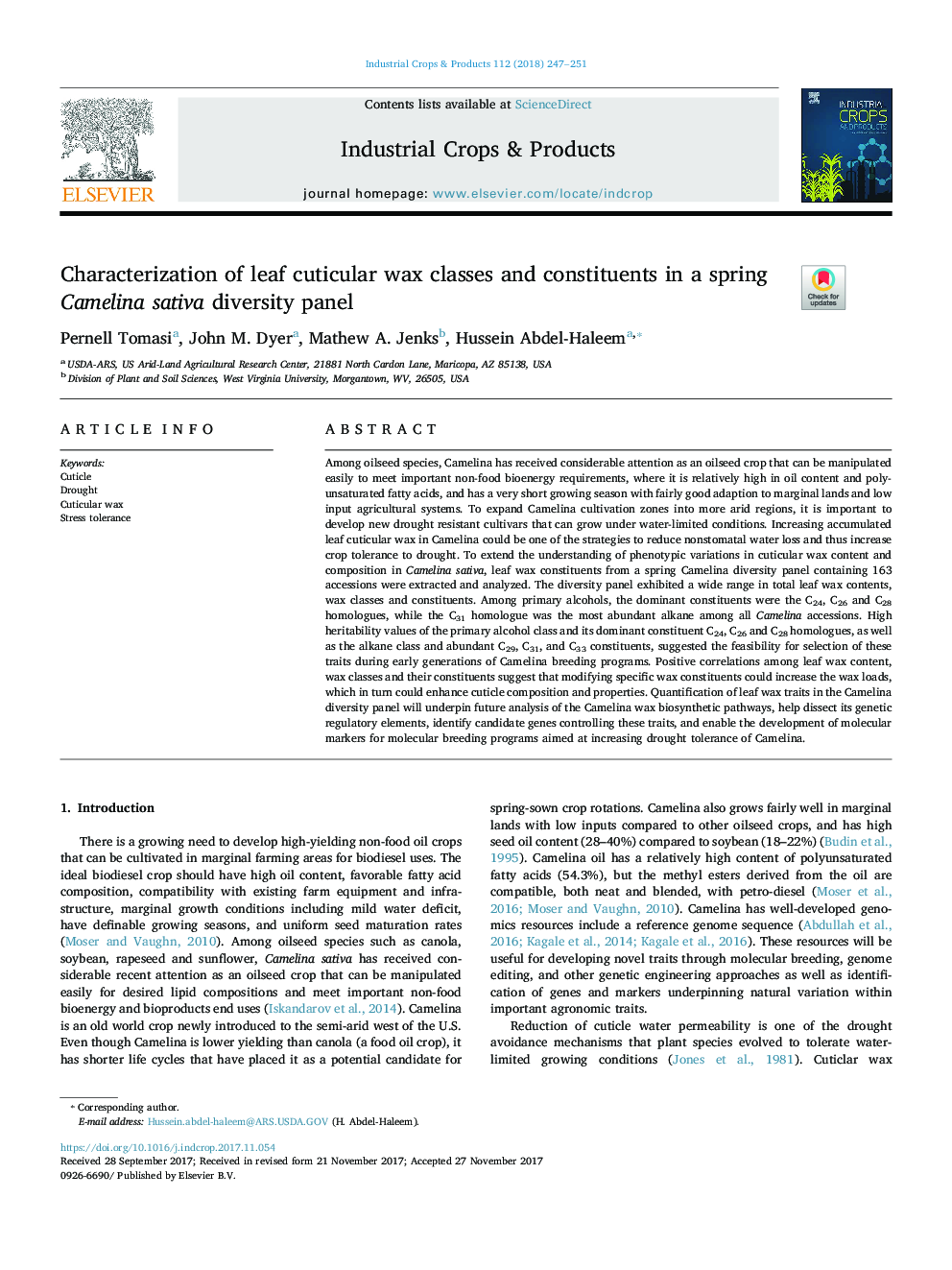| کد مقاله | کد نشریه | سال انتشار | مقاله انگلیسی | نسخه تمام متن |
|---|---|---|---|---|
| 8880754 | 1624798 | 2018 | 5 صفحه PDF | دانلود رایگان |
عنوان انگلیسی مقاله ISI
Characterization of leaf cuticular wax classes and constituents in a spring Camelina sativa diversity panel
دانلود مقاله + سفارش ترجمه
دانلود مقاله ISI انگلیسی
رایگان برای ایرانیان
کلمات کلیدی
موضوعات مرتبط
علوم زیستی و بیوفناوری
علوم کشاورزی و بیولوژیک
علوم زراعت و اصلاح نباتات
پیش نمایش صفحه اول مقاله

چکیده انگلیسی
Among oilseed species, Camelina has received considerable attention as an oilseed crop that can be manipulated easily to meet important non-food bioenergy requirements, where it is relatively high in oil content and polyunsaturated fatty acids, and has a very short growing season with fairly good adaption to marginal lands and low input agricultural systems. To expand Camelina cultivation zones into more arid regions, it is important to develop new drought resistant cultivars that can grow under water-limited conditions. Increasing accumulated leaf cuticular wax in Camelina could be one of the strategies to reduce nonstomatal water loss and thus increase crop tolerance to drought. To extend the understanding of phenotypic variations in cuticular wax content and composition in Camelina sativa, leaf wax constituents from a spring Camelina diversity panel containing 163 accessions were extracted and analyzed. The diversity panel exhibited a wide range in total leaf wax contents, wax classes and constituents. Among primary alcohols, the dominant constituents were the C24, C26 and C28 homologues, while the C31 homologue was the most abundant alkane among all Camelina accessions. High heritability values of the primary alcohol class and its dominant constituent C24, C26 and C28 homologues, as well as the alkane class and abundant C29, C31, and C33 constituents, suggested the feasibility for selection of these traits during early generations of Camelina breeding programs. Positive correlations among leaf wax content, wax classes and their constituents suggest that modifying specific wax constituents could increase the wax loads, which in turn could enhance cuticle composition and properties. Quantification of leaf wax traits in the Camelina diversity panel will underpin future analysis of the Camelina wax biosynthetic pathways, help dissect its genetic regulatory elements, identify candidate genes controlling these traits, and enable the development of molecular markers for molecular breeding programs aimed at increasing drought tolerance of Camelina.
ناشر
Database: Elsevier - ScienceDirect (ساینس دایرکت)
Journal: Industrial Crops and Products - Volume 112, February 2018, Pages 247-251
Journal: Industrial Crops and Products - Volume 112, February 2018, Pages 247-251
نویسندگان
Pernell Tomasi, John M. Dyer, Mathew A. Jenks, Hussein Abdel-Haleem,